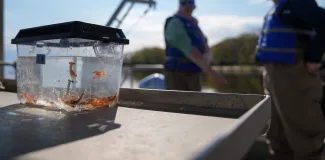
The hatchlings, born and raised in UNE's Girard Marine Science Center, received a proper sendoff into the waters off Ram Island
In a moment that marked the culmination of two years of hands-on research, student and faculty researchers at the University of New England released 32 juvenile lobsters into the waters off Maine’s coast Monday, May 12.
The release took place in the tide pools of Ram Island, UNE’s own marine research station in Saco Bay, a minutes-long boat ride away from the University’s Biddeford Campus.
Half of the lobsters bore a brilliant orange hue — an exceptionally rare coloration that occurs in only 1 in 30 million lobsters in the wild. All 32 were offspring of Peaches, an orange lobster donated to UNE’s Arthur P. Girard Marine Science Center in 2023 for conservation and research.
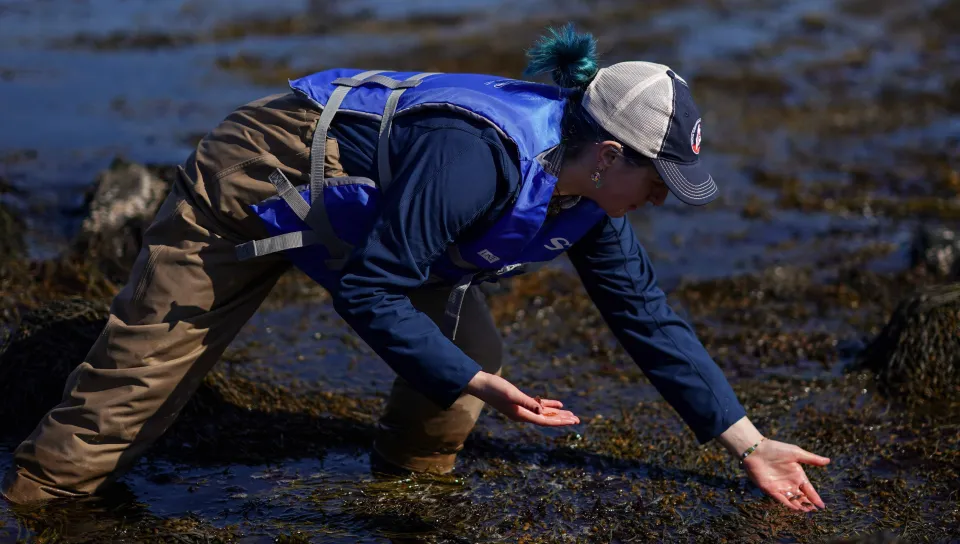
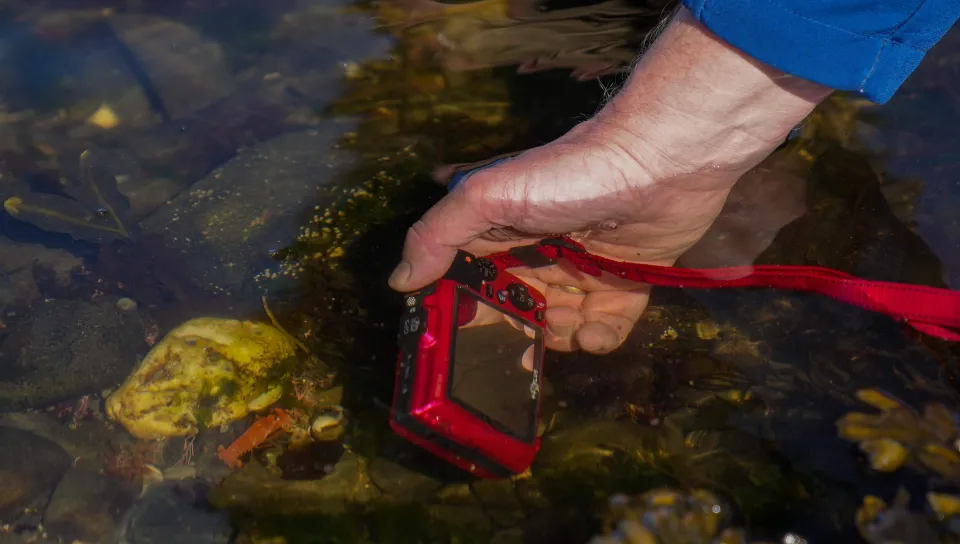
(Left): Claire Fecteau-Volk ’26 releases a juvenile lobster into the tide pools on Ram Island. (Right): UNE’s Markus Frederich takes an underwater photo of a just-released lobster.
When Peaches arrived, no one knew she was carrying eggs, but that unexpected development opened the door to a first-of-its-kind study in lobster genetics.
Over the past year, UNE marine science faculty and students have raised and studied Peaches’ hatchlings to explore the molecular basis of rare shell coloration, employing noninvasive DNA sampling methods that preserve the animals’ health while providing insight into their biology.
“To my knowledge, no one has ever reared lobster larvae from a colored lobster in a controlled lab setting,” said Markus Frederich, Ph.D., UNE professor of marine sciences and principal investigator on the project. “We’re able to ask questions like: Are all offspring of an orange lobster orange? No — only some. Is there a different survival rate? No. What causes the different coloration? We’re working on that part.”
It’s this amazing opportunity which I can’t ignore." — Markus Frederich, Ph.D.
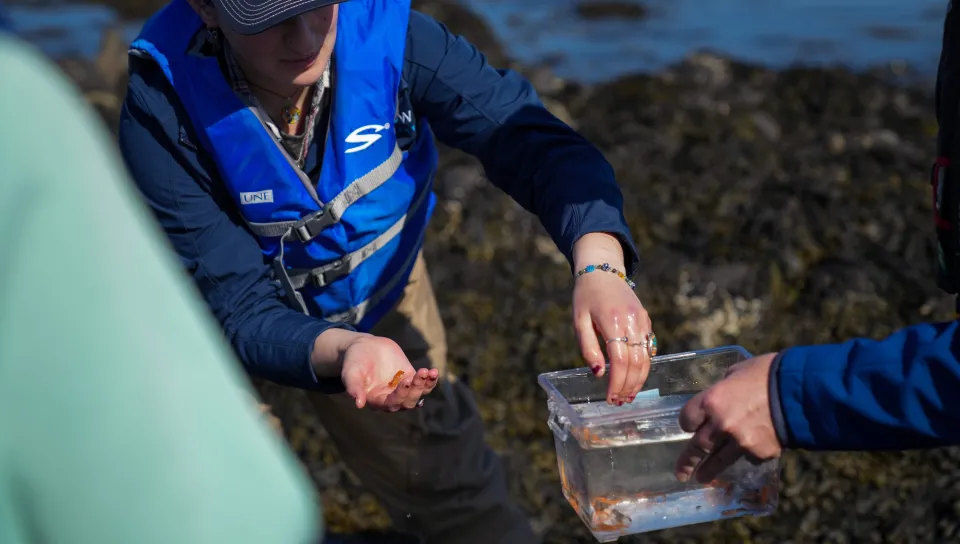
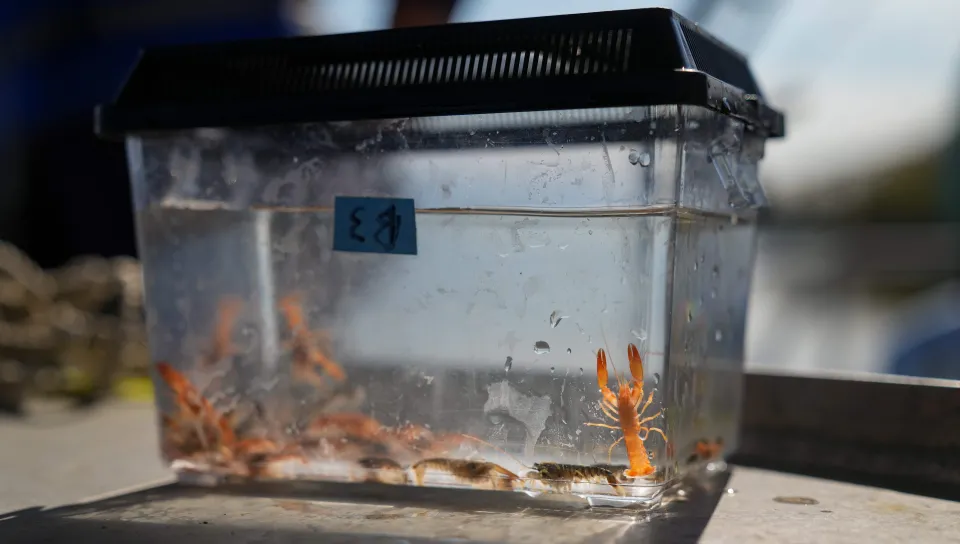
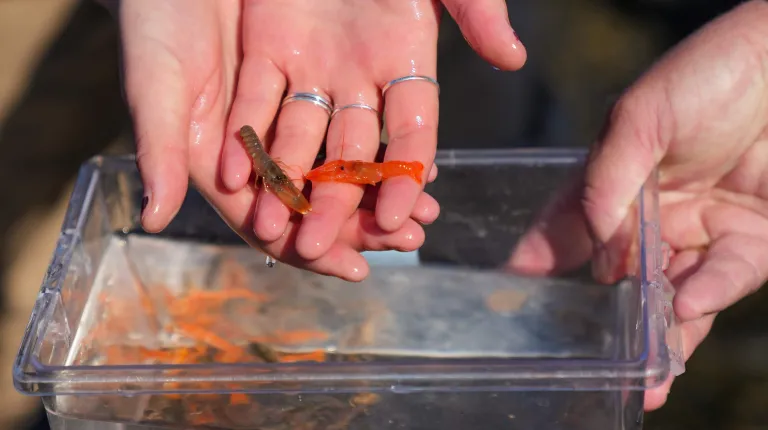
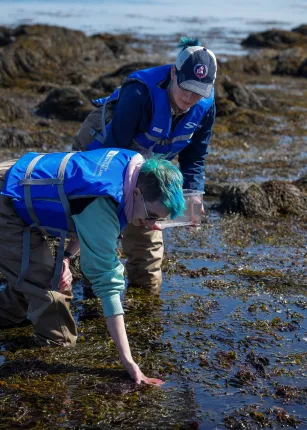
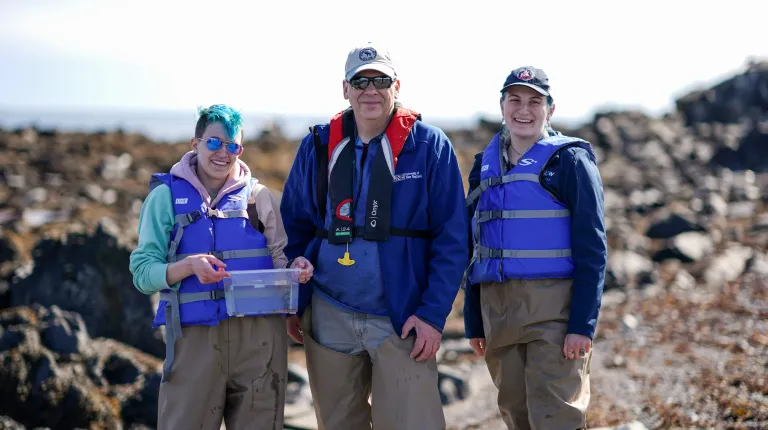
(Clockwise, from top left): Claire Fecteau-Volk prepares lobsters for release on Ram Island; a colorful mix of lobsters in their holding tank; UNE’s Markus Frederich (center) with students Fecteau-Volk (right) and Kai Watkins (left); Fecteau-Volk and Watkins release a lobster into the tide pools; a close up of both rare- and normal-colored juvenile lobsters.
That curiosity-driven approach to research reached a milestone last Monday, when UNE’s team gently released the lobsters into their natural habitat.
Read more in the UNE Magazine: Cracking the Genetic Code: Investigating Why Some Lobsters Are Blue, Orange, And Even Purple — for the First Time
“We brought roughly 32 orange and blue juvenile lobsters and released them in the tide pools,” said Claire Fecteau-Volk (Marine Sciences, ’26), who has worked on the project since its inception. “We spread them across a few different pools so they weren’t all clumped together and sent them on their way with all the love we could."
Fecteau-Volk described the experience as nothing short of remarkable.
“To work as an undergraduate in a lab like Dr. Frederich’s — let alone with rare-colored lobsters — is just a once-in-a-lifetime thing,” Fecteau-Volk said. “Even just studying normal lobsters would be pinch-myself worthy. But these? It’s truly transcendent.”
The lobsters will not be tracked. With all necessary genetic data collected, the researchers opted to return them to the ocean to complete their life cycle. Meanwhile, Frederich and his team will continue analyzing more than 15,000 genes extracted from the juveniles in hopes of uncovering the mystery behind rare lobster coloration.
Claire Fecteau-Volk ’26 narrates the rare lobster release
To work as an undergraduate in a lab like Dr. Frederich’s … is just a once-in-a-lifetime thing." — Claire Fecteau-Volk ’26
Frederich said it’s a pursuit with potential applications across marine biology and genetics — and an opportunity he couldn’t pass up.
“This project dropped into my hands out of nowhere,” Frederich told the Portland Press Herald in a front-page article, “But I thought, ‘Let’s just do it, it’s this amazing opportunity which I can’t ignore.’”
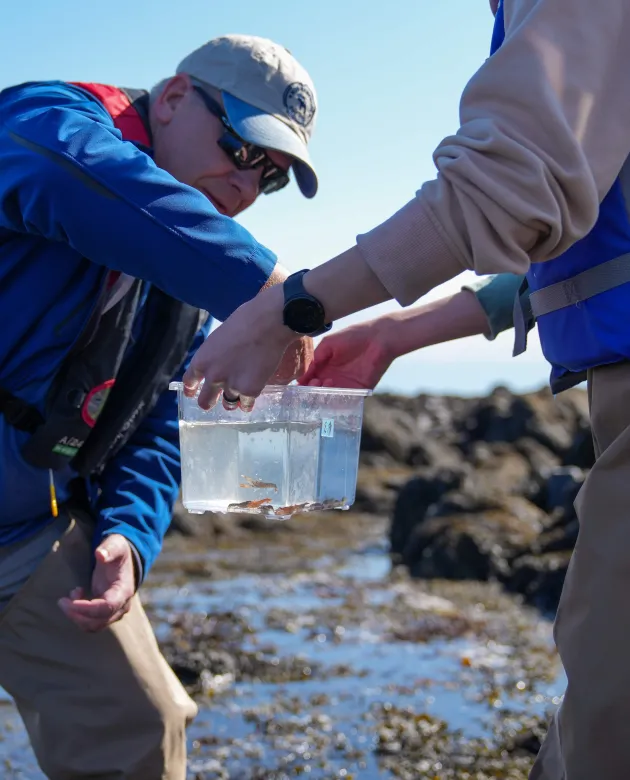
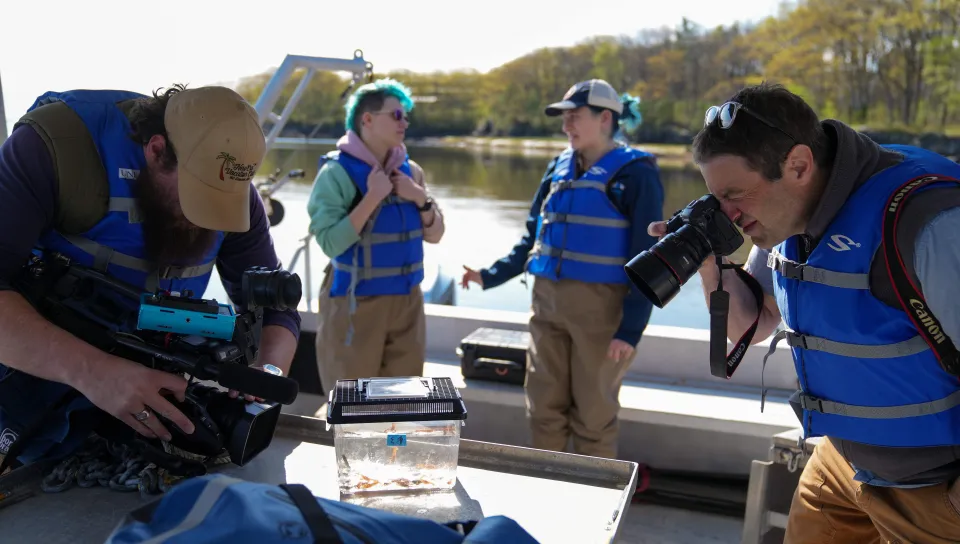
(Left): Frederich prepares a juvenile lobster for release. (Right): Reporters capture the tiny lobsters.
Frederich acknowledged the research doesn’t directly address a pressing global crisis, but, he said, it teaches students skills that are transferable to a number of other disciplines that just might.
It’s research for the sake of science, he said.
“It’s like being a little kid, going to the world with open eyes and trying to understand what’s there,” he told the paper. “Not every project needs to have the ultimate goal to save the planet. We’re learning new things, and that’s exciting.”